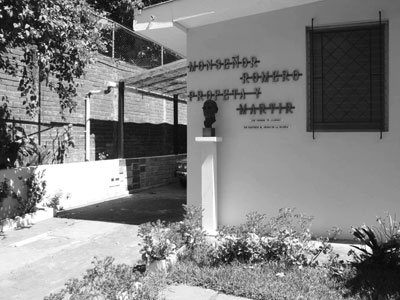Discovering El Salvador
If you’d like to visit a destination that offers good weather, beautiful countryside, plenty of shopping and some of the best surfing in the world — and you don’t like rubbing elbows with other tourists — El Salvador is hard to beat.
But it’s not a place to go if you want a relaxing, hassle-free, pampered trip. El Salvador doesn’t have much of a tourism infrastructure, and few of the people speak English. Crime is a problem also; the country has one of the highest homicide rates in the world.
Nevertheless, the only danger I found myself in on my March ’09 visit was dodging speeding cars when venturing from my hotel in San Salvador on foot. With aggressive drivers and few crosswalks and stoplights, it is not a pedestrian-friendly city.
The city also has been hit hard over the years by earthquakes (most recently in 2001), which is why you won’t find many historic buildings. But El Salvador’s most interesting sites aren’t man-made — and they aren’t in San Salvador.
About an hour’s drive northwest of the city is Cerro Verde National Park, where hikers can climb dormant volcanoes and see breathtaking vistas of the surrounding countryside.
The most dramatic volcano in the park is the black-coned Izalco, more than 6,000 feet high. It last erupted in 1966, but if you look closely you can still see small wisps of smoke emerging from the cone.
There are several hiking trails in the park, and it’s best to spend a few dollars to hire a guide to show you the way. (The park now requires this for safety reasons.) I visited on a Tuesday and saw only one other car in the parking lot.
From Cerro Verde, you can see the vividly blue Lago de Coatepeque, a volcanic crater lake that’s a popular weekend getaway for Salvadorans. On the lake there is a small island called Teopan, which has accommodations and a bird sanctuary.
Also visible from viewpoints on Cerro Verde is El Salvador’s Pacific coast, known for quiet beaches and outstanding surfing. To take advantage of the consistently good waves, a number of tour operators offer surfing trips.
In San Salvador I stayed at the Novo Apart-Hotel (phone 503 2521 2000), an apartment-style complex in a fairly nice part of town. It had a swimming pool and a great view of the San Salvador Volcano and cost about $50 per night.
Because so few travelers visit El Salvador, it’s difficult to find organized tours at reasonable prices. I called several tour companies to see if they offered excursions in the area. They did, but, because no one else had signed up on the days I wanted to go, the price would have been prohibitive to go alone. One company wanted $200 to take me on a tour of the countryside.
With the help of my hotel’s manager, I ended up hiring a taxi to drive me to the volcanoes and Lake de Coatepeque. It cost $60 for the five-hour trip.
The driver didn’t speak English and, with my limited Spanish, we had a difficult time communicating, but it’s amazing how, with a few select words and gestures, we were able to get by. It turned out to be a very enjoyable day. I hired the same driver to take me to the airport the next morning; the 45-minute trip cost $25.
I was surprised at how relatively pricey El Salvador was, especially compared to Nicaragua, from where I had arrived. Restaurant prices were about the same as in the United States, and taxis and hotels cost considerably more than in Nicaragua.
One factor in El Salvador’s favor is that it adopted the US dollar as its official currency in 2001, so Americans don’t have to worry about changing money. Take small bills, though, as many stores won’t take anything bigger than a 20-dollar bill.
The biggest plus of a visit to El Salvador, however, is seeing the unspoiled natural wonders of that pretty country. Just be sure to brush up on your Spanish before you go.
DAN FELLNER
Gilbert, AZ

